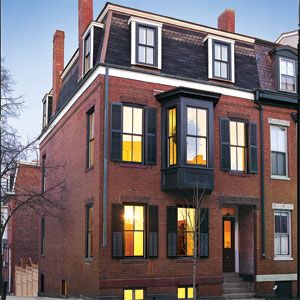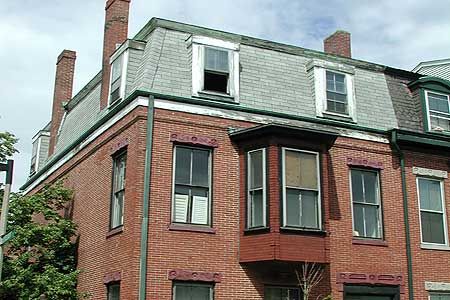
It’s often said that windows are a house’s eyes, and like human eyes,
they tend to be worth taking care of. Sooner or later, almost every
old-house owner will confront a difficult question: what to do with
those aging windows?
Part of the difficulty lies in the fact that
whatever decision is made, the answer is played out not once, but many times—at each window in the house. For Dan and Heather Beliveau, the owners of This Old House TV’s Charlestown project, the number was 21. Twenty-one old windows needed
help. What were the options?
Had the windows been something to crow about—original, inherently
beautiful — we might have rehabilitated them. We’d done such work with the Milton House’s colonial sash and the Salem House’s Federal-era windows, and our Watertown homeowners had had their Queen Anne double-hungs restored as well. Typically, this involves removing the
sash; reputtying the glazing; repairing, replacing, or introducing
weatherstripping, and replacing the old sash cords (if the window has
them). In Watertown, the rehab cost was about $175 per window. If the
frames and sills had needed work, the price would have been higher.
In Charlestown, restoration was not really an option, primarily because
the windows weren’t worth saving. Installed in the 1970s, they were
inexpensive replacements with poorly operating aluminum balances. Their
single glazing provided little protection from the heat or cold,
necessitating unsightly aluminum triple-track storms. Several of the
frames had racked within the settling building; as a result some of the
units combined inoperability with serious gaps that let in the drafts.
Some sills and frames were rotting (already!) as well. There wasn’t
much there to rehab.
Dan and Heather thus faced window replacement, with a few options to
choose from. One was to replace only the operating parts of the window:
the sash and balances. Often called sash-packs or the like, such units
are often marketed to the do-it-yourselfer, primarily because installing
them is relatively easy, since it doesn’t disrupt the existing window
frame and casing. A sash-pack for an average window opening of 20″x 28″
runs around $200 to $300, depending on quality. This is only about 15%
less than a full replacement unit with frame; the savings is in the
labor. Our window consultant in Charlestown, Jay Harman, points out
that adding features like true divided lights, spacer bars inside
insulating glass, custom colors, or upgraded hardware can often double
the base price. And, he told Dan and Heather, an important installation
requirement is that the frame not be rotted or out of square. Scratch
that option for Charlestown.
That left variations on a theme of complete window replacement—sash,
balances and frame (and sometimes exterior trim). With standard window
openings (meaning sizes that the manufacturer makes plenty of), it’s
possible to simply remove your old windows and slip in a new wood unit.
If the existing openings are close to standard size, they can be
modified (i.e. made smaller) to accommodate the new units. The
trade-off here, says Harman, is that the “daylight opening”—the glass
area — is reduced. The same thing happens with most vinyl replacement
units, since the vinyl, less stiff than wood, has to be made thicker. A
standard 20″x 28″ wood replacement window is in the $150 to $250 range,
says Harman, with vinyl units around $175. Then there’s the task of
installing them, which, when retrimming the exterior is included, can
cost up to $400.
The problem for the Beliveaus was one of the very features that
attracted them to the house: its huge windows. The ones in the living
room measure 7’6″ x 3’2″—most definitely not a standard size—and most of
the others were similarly atypical. Clearly, this would be a custom
order. Jay Harman brought us a sample window by a manufacturer that
could make just about anything we needed. Large size? Not a problem.
Two-over-two light pattern. Insulated glass with interior spacer bar
(goodbye triple-tracks). Cladding, extruded period-profile casing and
exterior muntin bar all in aluminum for ultra-low maintenance. Wood
interior. High-quality weatherstripping and locks. Tilt-in cleaning.
Add in a baked-on exterior paint in a period-perfect black-green, and we
couldn’t resist. Of course, all these features came with a price tag.
The living room windows retailed for about $700; a 20″x 28″ window with similar features would have been $320.
After carefully measuring our openings, brick-to-brick, we ordered. Six
weeks later, our windows arrived. When it came time to install them, we
got lucky: the weight pockets from the building’s original windows were
still there, hiding behind the aluminum balances of the replacements.
The considerable extra space they provided between the brick opening and
the sash allowed Tom and his crew to build a rough 2×4 frame to accept
the new windows, which they slipped in from outside, leaving the
buildings beautiful (and hard-to-replace) interior casing untouched.
The acclaim the new windows have garnered from crew and passersby alike
proves that when it comes to house renovation, it’s all in the eyes.

